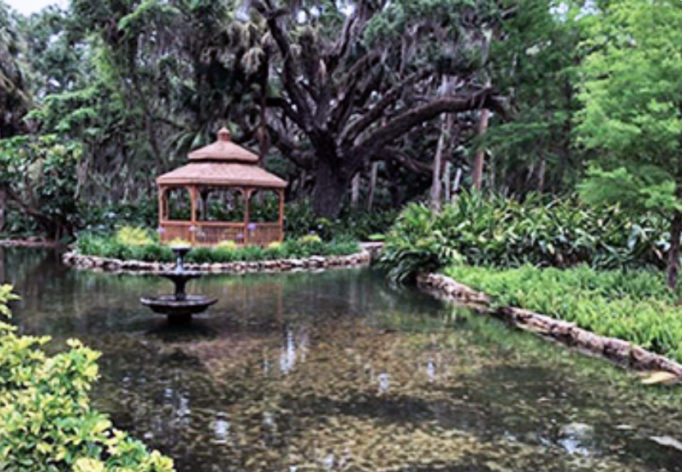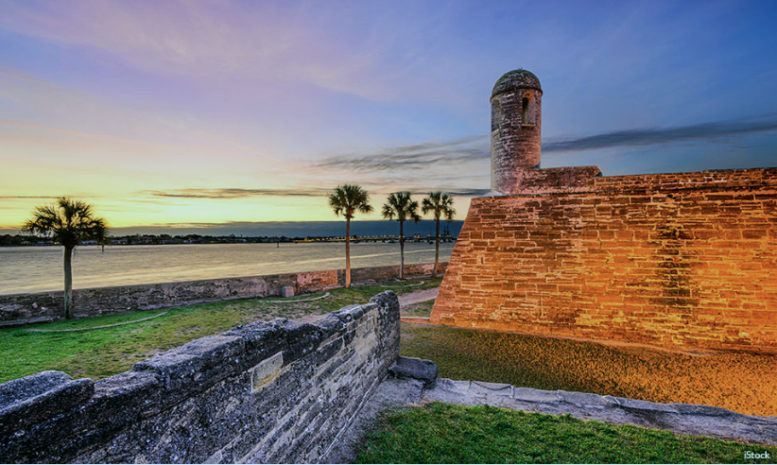Coquina and tabby are “bullet-proof” building materials born of the sea. Nearly every child who’s played on the beach has built a simple sand castle by creating a turret with an upturned bucket of sand. Others, more elaborate (and typically built with help from an ambitious parent), boast multiple structures surrounded by moats and rivers that ebb and flow with the motion of ocean waves.
But did you know that near St. Augustine, Florida — the nation’s oldest city — there exists an actual “castle” made of sand? Located on 20.5 acres on the western shore of Matanzas Bay, the Castillo de San Marcos National Monument is the oldest (circa 1695) and largest masonry fort in the continental United States.
The Castillo’s masonry, or stonework, is largely comprised of coquina (Spanish for “small shells”) — a natural concrete derived from the ocean. Coquina is a rare form of limestone composed of the shell fragments of ancient mollusks and other marine invertebrates, which, over time, are glued together by dissolved calcium carbonate in the shells. Coquina is also the name of a common tiny clam found everywhere on Florida beaches. Their shells, which come in countless colors, are reflected in the Castillo’s muted hues.
As a building material, coquina is lightweight, easy to find (it’s indigenous to the Florida coast), easy to use, and nearly indestructible. Not only is coquina bullet-proof, it is virtually cannon-ball- proof! Due to its plentiful microscopic air pockets, coquina is easily compressed. In days long past, cannon balls fired at the Castillo simply lodged in its walls. Which, one supposes, is why the old fort still stands after 300 years. One of the best places to see coquina in its natural state is Washington Oaks Garden State Park near Palm Coast, Florida, about 30 miles south of St. Augustine. The park’s picturesque coquina outcroppings are some of the largest on the Atlantic Coast.
A related building material is tabby, often called coastal concrete, which is basically manmade coquina.
Tabby is composed of the lime from burned oyster shells mixed with sand, water, ash, and other shells. As far back as the 1600s, Spanish and English settlers used tabby to build their homes and other structures, and to pave their roads, throughout the coastal Carolinas, Georgia, and Florida.

The natural coquina outcroppings at Washington Oaks Gardens State Park near Palm Coast, Florida, are among the largest on the Atlantic Coast. Credit: Washington Oaks Gardens State Park
Many tabby buildings still stand today, including Georgia’s Fort Pulaski near Savannah and the R.J. Reynolds Mansion on Sapelo Island. These historic structures, among many others, are testament to both the ingenuity of early Americans, and the untold bounty of the sea.
